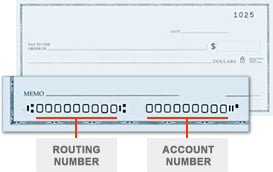Please Note:Our offices will be closed Thursday, January 1, in observance of New Year's Day. You can still access all your digital banking tools — just use the login button below to get started.
February 7, 2024 •Leah Driver

Believe it or not, tax season is here again. As you gather your documents and prepare to file, it's important to consider how you'll receive your tax refund. The Internal Revenue Service (IRS) recommends receiving your refund by direct deposit, emphasizing that it’s not only free, fast, and simple, but it's also safe and secure. Taxpayers can even split their refund into multiple accounts.
Why choose direct deposit for your tax refund? There are several compelling reasons:
So, how can you ensure that you receive your refund via direct deposit? It's simple:
But where can you find your bank account and routing numbers? Here are a few places to look:

Be sure to double-check your information before submitting to help avoid errors and delays, and to choose “Direct Deposit” as your desired refund method as you can’t make changes after you’ve filed your tax form with the IRS.
The combination of electronic filing and direct deposit yields the fastest tax refunds. Electronic filing reduces errors and prompts for missing information, resulting in quicker processing times. Most refunds are issued in less than 21 days, with taxpayers able to track their refund status using the IRS's "Where's My Refund?" tool or the IRS2Go mobile app.
As you eagerly await your tax refund, consider how you'll manage your money once it arrives. Whether you're looking to pay off debt, build an emergency fund, or make investments for the future, your refund presents an opportunity to enhance your financial well-being.
By choosing direct deposit, staying informed about your refund status, and making strategic decisions about your finances, you can maximize the benefits of your tax refund and pave the way for financial success.
CFPB Tax Refund Tips: Understanding Refund Advance Loans and Checks
IRS Refund Inquiry Information
ABA Handout - Use Direct Deposit for Your Tax Refund
The views, information, or opinions expressed in this article are solely those of the author and do not necessarily represent the views of Citizens State Bank and its affiliates, and Citizens State Bank is not responsible for and does not verify the accuracy of any information contained in this article or items hyperlinked within. This is for informational purposes and is no way intended to provide legal advice.